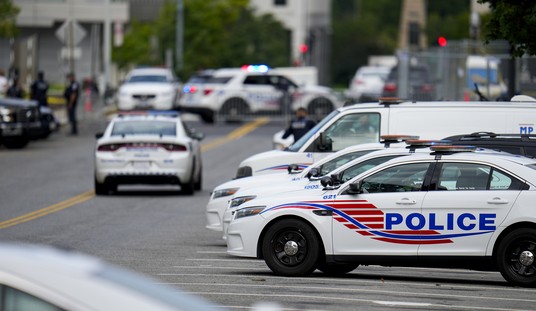What accounts for that discrepancy?
The former group are seven firearms instructors from around the nation. Their students include “regular Joes” who desire to become competent with their arms, law enforcement officers, law enforcement trainers, and highly-specialized military units who need to become more proficient with small arms in specialized situations than the average infantry “grunt.”
Just about anyone can teach basic firearms safety and the fundamentals of marksmanship to enable an average person to hit a stationary target, but these higher-level instructors (contacted on background to get their unvarnished professional opinions) teach quite a bit more than basic marksmanship.
Instructors who “train the trainers,” and who train the most elite civilian (including law enforcement) and military shooters, spend a great deal of time in their intermediate and advanced courses teaching students to solve complex problems. These complex problems aren’t shooting at more targets—that’s just repetition of basic skills—but are problems largely of target identification, target discrimination, and when and how much to shoot.
Failing at target identification and target discrimination gets both innocent bystanders killed (such as the rash of homeowners shooting family members last month, thinking they were shooting at intruders), but can also get the good guys killed when they don’t discern and respond to a threat in a timely manner, and with the appropriate level of force.
I saw an example of the latter part of the problem taking place during my force-on-force training at Gunsite Academy in my 350 Intermediate Pistol course.
In the scenario, students entered a building for a job interview. As we were being led back into the offices, a man threw down a dummy representing his boss, jumped on stop of it, and began stabbing it, screaming, “you can’t fire me!”
In the scenario, students needed to determine not just who and when to engage, but also with how much force to engage.
If the student used enough force applied correctly, the threat was stopped relatively quickly. The focus then shifted to communicating to others in the building to call 911 and relay information to the dispatcher.
If you didn’t use enough force, the attacker would play mind games with the student, and claim that he was actually the victim in an effort to convince you to give him an opening… and then he would go for the gun hidden under his coat.
Several students students who didn’t use enough force were shot at by the assailant. Some recovered and put the target down, like the young lady in the video above. Some students were “killed.”
The scenario showed that in the real world, it’s not typically a simple binary “shoot/don’t shoot” scenario. In the real world, it’s a much more complex issue of if someone needs to be shot at all, and if so, when, and how much force is necessary to resolve the situation.
In the Robert “LaVoy” Finicum incident, we had a man who fled a traffic stop at a high rate of speed after being ordered out of his vehicle by law enforcement officers. He then crashed into a snowbank in an apparent attempt to drive around a roadblock set by the Oregon State Police. When the vehicle ground to a halt, Finicum immediately left the vehicle.
He was immediately confronted by Oregon State Police officers. Following standard police procedures common to every local, state, and federal law enforcement agency, Finicum was no doubt told repeatedly to keep his hands up where officers could see them, and was also probably told to stop moving. Finicum was non-compliant on both counts.
Finicum dropped his hands on three separate instances. Some “internet experts” and several of the people in Finicum’s truck claim that he dropped his hands on these three occasions because he had been shot.
None of the firearms instructors I spoke with saw any evidence that this claim was true, and I concur. We saw a guy stumbling through the snow on uneven ground attempting to regain his balance. There no movements of Finicum’s hands that would reasonably be considered attempts to grasp at injuries, as he hands don’t go to his body and stay at the location of the so-called wounds, and he doesn’t double-up.
Up until this point, we had a non-compliant suspect that was still not acting as a deadly force threat, and no credible claims that shots had been fired at Finicum, much less any evidence that he’s been hit.
Finicum then stops moving forward, and after dropping his hands a third time—again, we’ve not seen any indication in his movements showing that he was “grasping at gunshot wounds”—he squares up facing the OSP officer on the snowbank and begins reaching toward his pockets and then back out again.
Finicum reaches several times towards his coat, then begins to turn left towards the officer coming towards him from the treeline. Finicum reaches with his left hand to open his coat, while bringing his right arm across his chest in a motion consistent with drawing a weapon.
It is at that point he was shot and killed. He goes down immediately. The instructors I spoke with about the shooting seem to be in agreement that the Oregon State Police trooper at the bottom of the screen probably fired at Finicum from behind, but that we can’t tell for sure from the grainy quality of the video. I’d note that an officer in such a position is fully justified in taking such a shot if he feels the suspect is drawing a weapon to use against another person. In this instance, that would be the OSP officer has begun turning towards as he reached into his coat.
There also seems to be a consensus among these experts that the officer emerging from the treeline in an attempt to arrest Finicum probably fired the fatal shot as he saw Finicum reaching into his coat.
That brings us back to the orange juice.
Graham v. Connor was a 1989 Supreme Court case that determined an objective reasonableness standard should be applied to claims that law enforcement officers used excessive force, up to and including deadly force, and that the proper application of the objectionable reasonableness standard “requires careful attention to the facts and circumstances of each particular case.”
The case came about because:
Petitioner Graham, a diabetic, asked his friend, Berry, to drive him to a convenience store to purchase orange juice to counteract the onset of an insulin reaction. Upon entering the store and seeing the number of people ahead of him, Graham hurried out and asked Berry to drive him to a friend’s house instead. Respondent Connor, a city police officer, became suspicious after seeing Graham hastily enter and leave the store, followed Berry’s car, and made an investigative stop, ordering the pair to wait while he found out what had happened in the store. Respondent backup police officers arrived on the scene, handcuffed Graham, and ignored or rebuffed attempts to explain and treat Graham’s condition. During the encounter, Graham sustained multiple injuries. He was released when Conner learned that nothing had happened in the store. Graham filed suit in the District Court under 42 U.S.C. § 1983 against respondents, alleging that they had used excessive force in making the stop, in violation of “rights secured to him under the Fourteenth Amendment to the United States Constitution and 42 U.S.C. § 1983.” The District Court granted respondents’ motion for a directed verdict at the close of Graham’s evidence, applying a four-factor test for determining when excessive use of force gives rise to a § 1983 cause of action, which inquires, inter alia, whether the force was applied in a good faith effort to maintain and restore discipline or maliciously and sadistically for the very purpose of causing harm. Johnson v. Glick, 481 F.2d 1028. The Court of Appeals affirmed, endorsing this test as generally applicable to all claims of constitutionally excessive force brought against government officials, rejecting Graham’s argument that it was error to require him to prove that the allegedly excessive force was applied maliciously and sadistically to cause harm, and holding that a reasonable jury applying the Johnson v. Glick test to his evidence could not find that the force applied was constitutionally excessive.
As Wikipedia correctly notes:
The Court then outlined a non-exhaustive list of factors for balancing an individual’s rights vs. an officer’s: 1) “the severity of the crime at issue”; 2) “whether the suspect poses an immediate threat to the safety of the officers or others”; and 3) “whether he is actively resisting arrest or attempting to evade arrest by flight.”
The Graham Court cautioned that “[t]he “reasonableness” of a particular use of force must be judged from the perspective of a reasonable officer on the scene, rather than with the 20/20 vision of hindsight.”
LaVoy Finicum stated numerous times that he would not be taken alive. He then fled a police stop, and attempted to drive around a police roadblock a mile down the road. Instead of surrendering, he left his vehicle and then dropped his hands to his coat several times, before finally turning towards an officer while reaching inside his coat.
This act has to be considered an immediate threat to the safety of the officers, and clearly justifies the use of deadly force against Robert “Lavoy” Finicum.
There was no “ambush.”
There was no “murder.”
Robert Finicum put the lives of officers at risk, and the Oregon State Police responded as appropriately to that threat as they could be expected to under the circumstances.








Join the conversation as a VIP Member